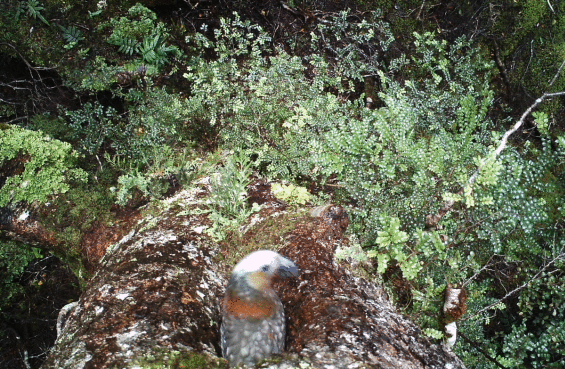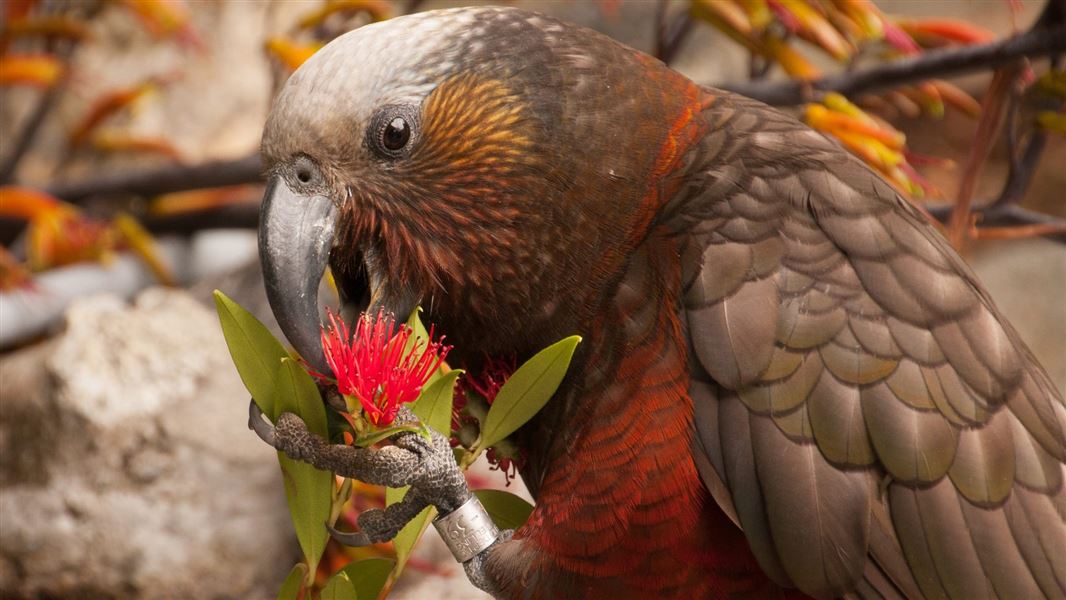DOC has studied the effects of predator control using aerial 1080 on South Island kākā. The research at Lake Paringa in South Westland, looked at the survival and breeding of kākā over five years.
Nesting in tree holes, female kākā and chicks are vulnerable to attack by stoats and possums. This forest parrot used to be widespread but is now restricted to large forest areas.

Watch an adult kākā leave its nest hole before a stoat enters the nest and steals the kākā chick
Our scientists monitored kākā nests in breeding seasons from 2010 to 2015 after aerial 1080 treatment and in an area where 1080 had never been used.
Results show on average 55% of kākā nests were successful up to a year after 1080 treatment but less than 2% of nests produced chicks in the comparison area.
This result meant that 30 times as many kākā chicks were produced in the area after 1080 treatment as the area where no 1080 was used. Adult birds also had a much higher survival rate in the area where predators were controlled with 1080.
Only 3% of adult kākā died in the 1080 treated area, whereas 20% died in the area that wasn't treated.
This result is significant for this relatively long-lived parrot.
The research at Lake Paringa backs up another long-term DOC study at Waitutu Forest in Fiordland that showed kākā making an extraordinary recovery after more than a decade of pest control.
